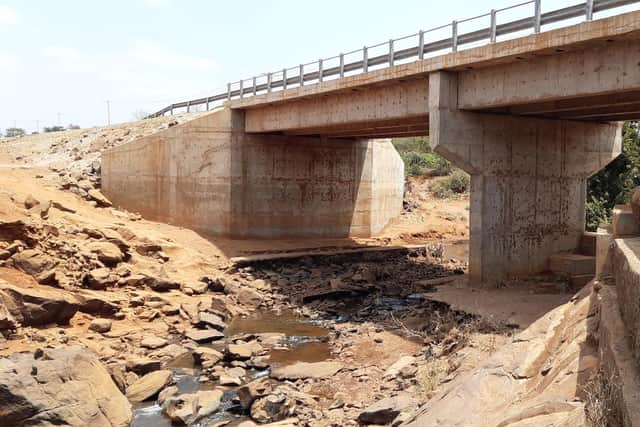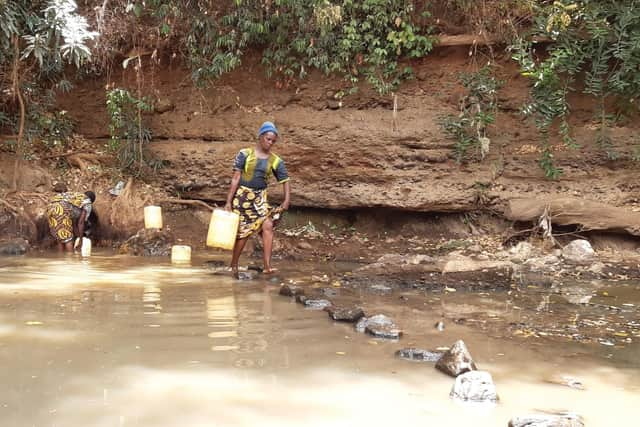COP26: Why Kenya's main water source is under threat
Standing tall as Africa’s second tallest mountain, Mountain Kenya has for years been covered by fog and snow at its peak, but that is not the case anymore.
Climate change and human activity around the mountain has now made the location drier than ever, putting Kenya’s main source of water at risk.


Advertisement
Hide AdAdvertisement
Hide AdThrough the eastern side of the mountain, three thousand feet above sea level, there is the Moorland. The Moorland is still recovering from a fire that is said to have been caused by honey harvesters, who gutted down thousands of hectares
Stella, who has been climbing the mountain for more than 20 years, is lost for words, having witnessed drastic changes to the Mount Kenya ecosystem.
“The snow canopy that is covering the peak of the mountain all year round 15 years ago is no more,” she says. “The more we move downstream, the more the river dries up.”
At the source of one of the major rivers flowing east of the mountain, water quality and quantity is still good, but it has been better.


However, just outside the forest, huge pipes are strategically put to abstract water from the river.
Due to decline of water in the river, some areas that were once wetlands have been turned to farms. At the extreme downstream, the river has completely dried up.
This is the case with many of the other rivers whose source water comes from Mount Kenya. The effects are being felt by communities living downstream of these rivers.


“After the rivers dried up, snakes are now entering our homes in search of water, thus endangering the lives of people,” says Josephat Muriuki, a resident of Kathwana in Tharaka-Nithi county.
Advertisement
Hide AdAdvertisement
Hide AdIt’s not only humans who are having to deal with the consequences of the rivers drying up.
At the Meru National Park, one of the biggest parks in Kenya, a home to elephants, lions, leopards and an endangered black rhino sanctuary, among other animals, three of the main rivers servicing the park have dried up.
Animals such as buffalo are moving to the surrounding community in search of water and pasture.
This has led to serious conflict between the local community and wildlife.
There has also been an increase in cases of monkeys and baboons invading homes to look for water in the affected areas, especially those near parks and forests.
“The community neighbouring the park to the west have a lot to do with what we are experiencing; drying of rivers in park,” says Chongwa Bakari, former senior warden of Meru National Park.
Now more than ever, there is a serious need to educate people living in the upstream of the rivers and riverbanks, on better ways to use water especially for irrigation.
For example, rainwater harvesting has been cited as one way of reducing pressure on the rivers.
Advertisement
Hide AdAdvertisement
Hide AdClimate smart ways of farming and planting of indigenous trees along the river banks are also some of the other interventions environmentalists are proposing as a long-term solution to mitigating the effects drying up of rivers.
- Dan Kaburu is an award-winning environment reporter based in Nairobi, Kenya. He runs a weekly TV segment on K24. This article is part of The Scotsman and Earth Journalism Network partnership, set up by global non-profit organisation Internews.
Comments
Want to join the conversation? Please or to comment on this article.
